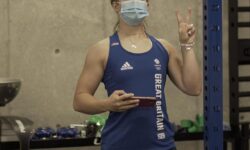The road to recovery: Exercise after Covid
There have been a lot of reports both in the media and anecdotally about people struggling to get back to full fitness after contracting Covid-19.
An article in The British Medical Journal (BMJ 2021; 372:m4721) explains that even mild Covid symptoms can leave people feeling wiped out and unable to get back to their previous levels of fitness for a long time.
‘After mild suspected covid-19, a proportion of people experience prolonged recovery, particularly when trying to return to exercise.’
The article goes on to say that, while there is only limited research available at present, there is some suggestion that there is a slight risk of cardiac injury in the form of viral myocarditis among those returning to exercise after Covid. For this reason, the advice is to seek advice from a doctor or other health professional if you are still feeling unwell after a bout of covid or other viral infection.
Start with small steps
Once you have the all-clear to get back to an exercise programme, the advice is straightforward – begin with light work and only raise the intensity when your body is able to cope.
Light intensity means exercise that barely leaves you out of breath, so walking, gardening, yoga or stretching exercises.
Gradually increase the intensity as your fitness levels begin to normalise. Add 15 minutes of slightly higher intensity work to your daily routine. This may mean a light intensity activity such as yoga for 15 minutes, followed by a gentle jog or cycle ride for another 15 minutes.
Do this for a week or so, allowing your body to adapt to an increasing workload. If you feel ready, now is the time to start adding exercises that are of pre-Covid intensity. This might include intervals of two 5-minute blocks of higher intensity exercise, such as going up stairs, jogging, swimming or cycling. These activities should be at an intensity where you can still hold a conversation.
Upping the work rate
The final stage of recovery is to add in strength exercises and change of pace running activities, such as side stepping, short sprints or running up an incline. These can be added incrementally, increasing the number of repetitions or the duration of the higher intensity activity over the course of a week.
For all these phases of recovery, a week at each stage its suggested, although you should stay at the phase you feel comfortable with for as long as necessary.
It is also a good idea to monitor for any inability to feel recovered at one hour after exercise. In addition, on the day after, be aware of abnormal breathlessness, abnormal heart rate, excessive fatigue or lethargy, and markers of mental ill health. If these occur, or if you fail to progress as expected, step back to an earlier phase of activity and seek medical advice when unsure. Keeping a diary of exercise progression, along with making a note of your perceived rate of exertion (easy, mild, hard), any changes in mood, and, if you are used to measuring it, objective fitness data such as heart rate, can be helpful for monitoring progress.
The key to complete recovery is to take things steady and only increase the exercise intensity when you feel absolutely ready to do so. If you have any questions about the road to recovery after Covid, check with one of the personal trainers team in the Outlooks Gym.







